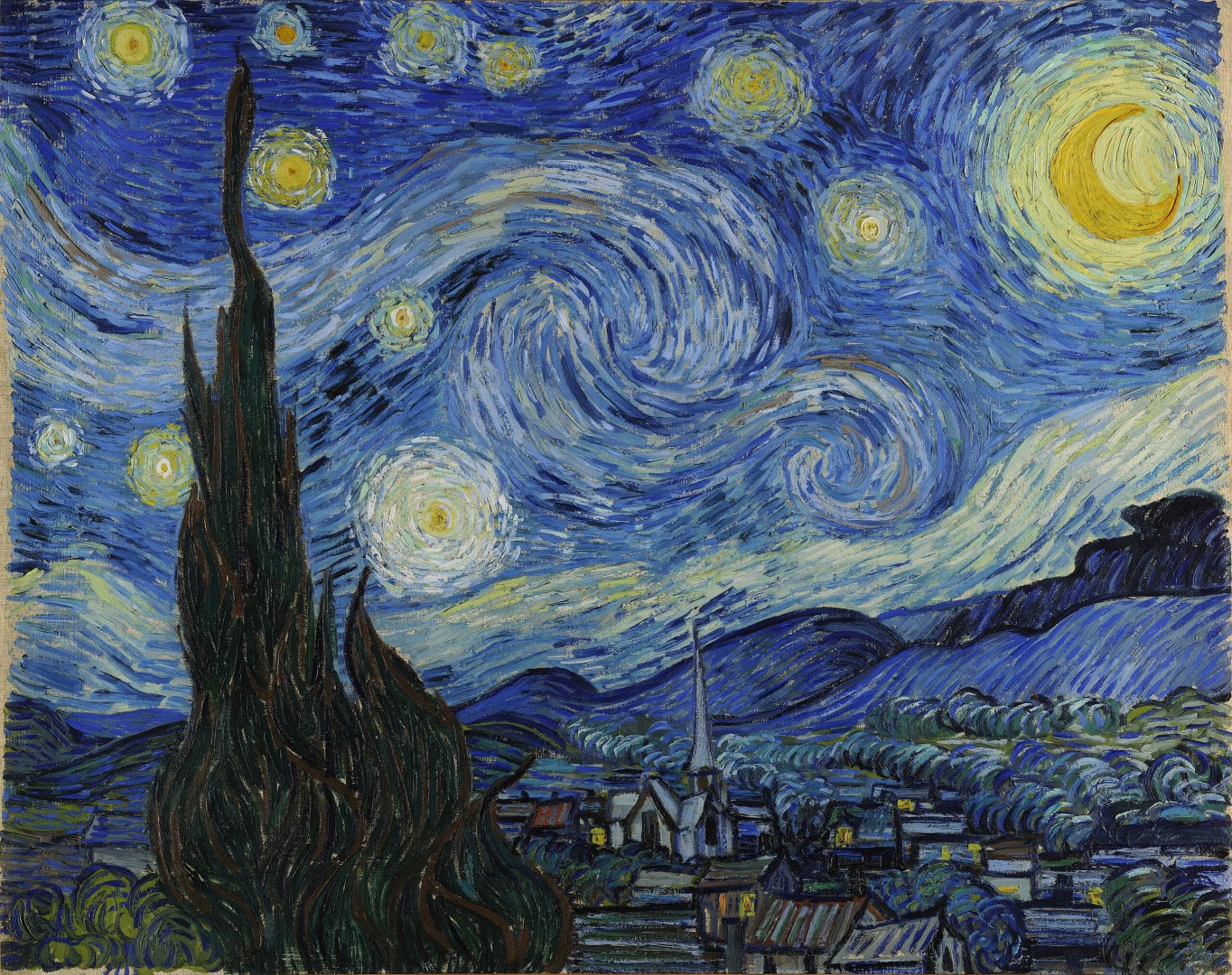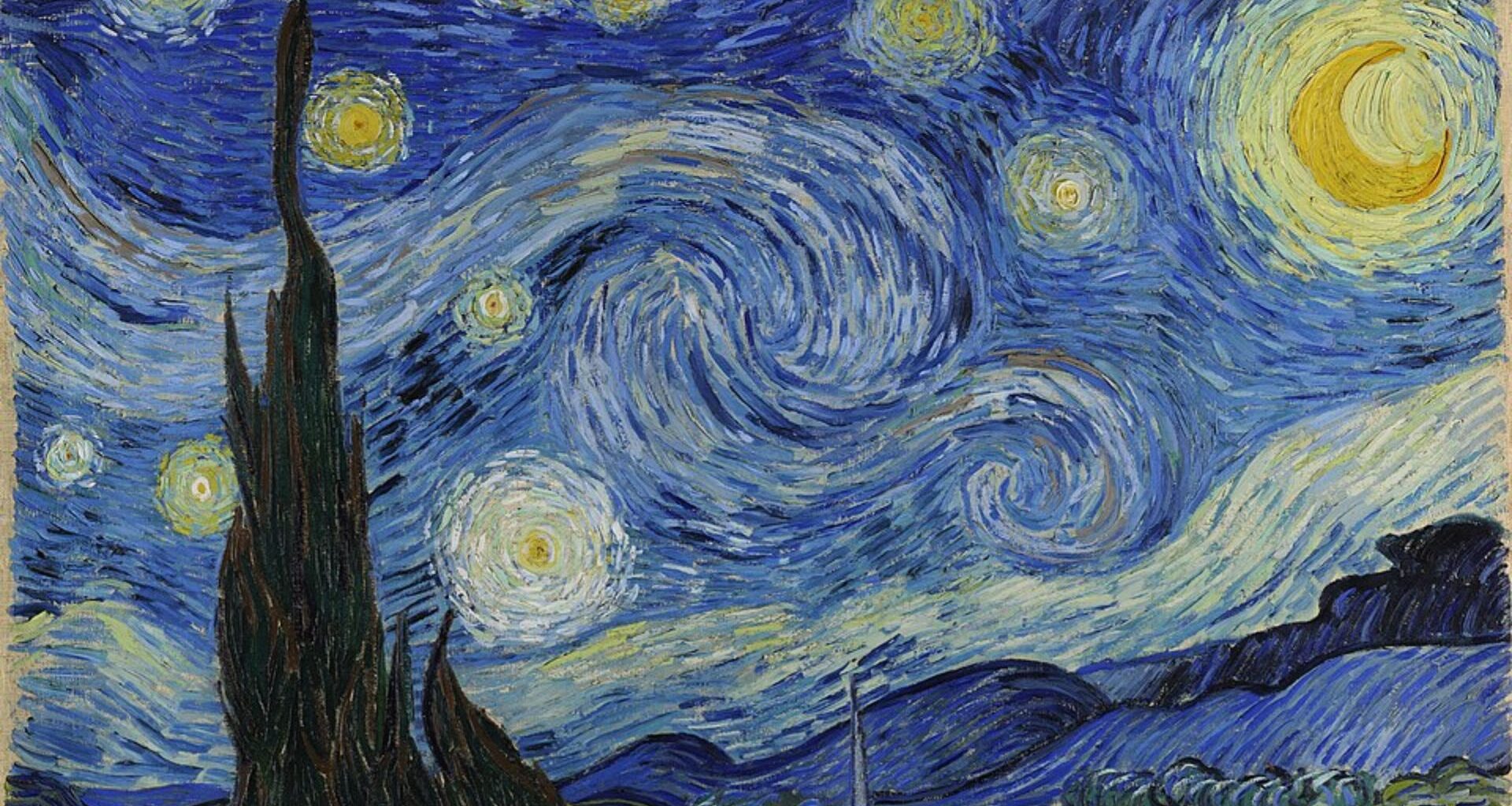Famous American writer Isaac Asimov once said, “There is an art to science, and science in art.” A new study proves this quote right by highlighting a never-before-seen connection between Vincent van Gogh’s famous painting “The Starry Night” and quantum physics.
The main focus of the study is the Kelvin–Helmholtz instability (KHI), an effect observed in the everyday world when two fluids slide past each other at different speeds, which can sculpt waves and whorls in clouds, rivers, or ocean surfaces.
“Our research began with a simple question. Can the Kelvin–Helmholtz instability happen in quantum fluids?” Hiromitsu Takeuchi, lead study author and an associate professor at Osaka Metropolitan University, said.
Until now, no one had actually seen KHI in a quantum fluid. However, the authors of the current study not only captured it for the first time but also discovered crescent-shaped vortices, known as eccentric fractional skyrmions (EFSs), which bear a striking resemblance to the glowing moon in van Gogh’s The Starry Night.
“Skyrmions are usually symmetrical and centered, but EFSs have a crescent-like shape and contain embedded singularities, points where the usual spin structure breaks down, creating sharp distortions. To me, the large crescent moon in the upper right corner of ‘The Starry Night’ looks exactly like an EFS,” Takeuchi added.
Recreating turbulence in a quantum world
 The Starry Night by Vincent van Gogh. Image credits: Wikimedia Commons
The Starry Night by Vincent van Gogh. Image credits: Wikimedia Commons
In ordinary fluids, KHI shows up wherever there’s a sharp difference in speed between two flows. This effect can be easily observed in the ripples of rough seas or the streaks of clouds in the sky.
However, reproducing the effect in a quantum fluid is far from straightforward. Quantum fluids, such as Bose–Einstein condensates or superfluids, behave according to quantum mechanics rather than classical physics.
They have no viscosity, and their properties are tied to delicate quantum states that are notoriously hard to create and control. For decades, this made direct observation of KHI in such systems seem out of reach.
The study authors overcame this challenge using an interesting setup. They cooled a gas of lithium atoms to a temperature barely above absolute zero, forcing it into a multi-component Bose–Einstein condensate, a phase where atoms act like a single coherent quantum wave.
They arranged the condensate into two overlapping components that flowed past each other at different speeds. At the boundary between these flows, rippling patterns began to form, closely echoing the early stages of classical KHI.
What came next was completely new. In the quantum setting, the instability didn’t just create smooth waves; it generated vortices whose structure was dictated by the system’s quantum nature. These turned out to be EFSs, a new kind of topological defect.
Unlike the symmetrical skyrmions found in magnetic materials, EFSs were offset, crescent-shaped, and contained embedded singularities, points where the normal spin pattern abruptly broke down, producing sharp distortions.
“These skyrmions emerge from anomalous symmetry-breaking associated with an eccentric spin singularity and carry half the elementary charge—a feature that distinguishes them from conventional skyrmions and merons,” the study authors said.
A new type of quantum
Skyrmions are already being investigated for their potential in spintronics, an emerging field that aims to build faster, more efficient data storage and computing devices by controlling particle spins rather than electrical currents.
Finding an entirely new variety of skyrmion in a quantum fluid could point to unexplored ways of creating and manipulating such structures.
Moreover, this work also opens up fresh questions for theory. For instance, EFSs don’t fit neatly into existing topological classifications, suggesting that our understanding of such quantum structures is incomplete.
“Our results confirm the universality between classical and quantum Kelvin–Helmholtz instabilities and broaden our understanding of complex nonlinear dynamics for a non-trivial texture in topological quantum systems,” the study authors added.
The researchers now plan to run more precise experiments, which could allow them to test predictions made over a century ago about the wavelengths and frequencies of Kelvin–Helmholtz waves. They are also interested in seeing if similar vortices appear in other multi-component or higher-dimensional quantum systems.
In short, a discovery that began with a nod to a 19th-century artwork might end up reshaping parts of 21st-century physics.
The study is published in the journal Nature Physics.
